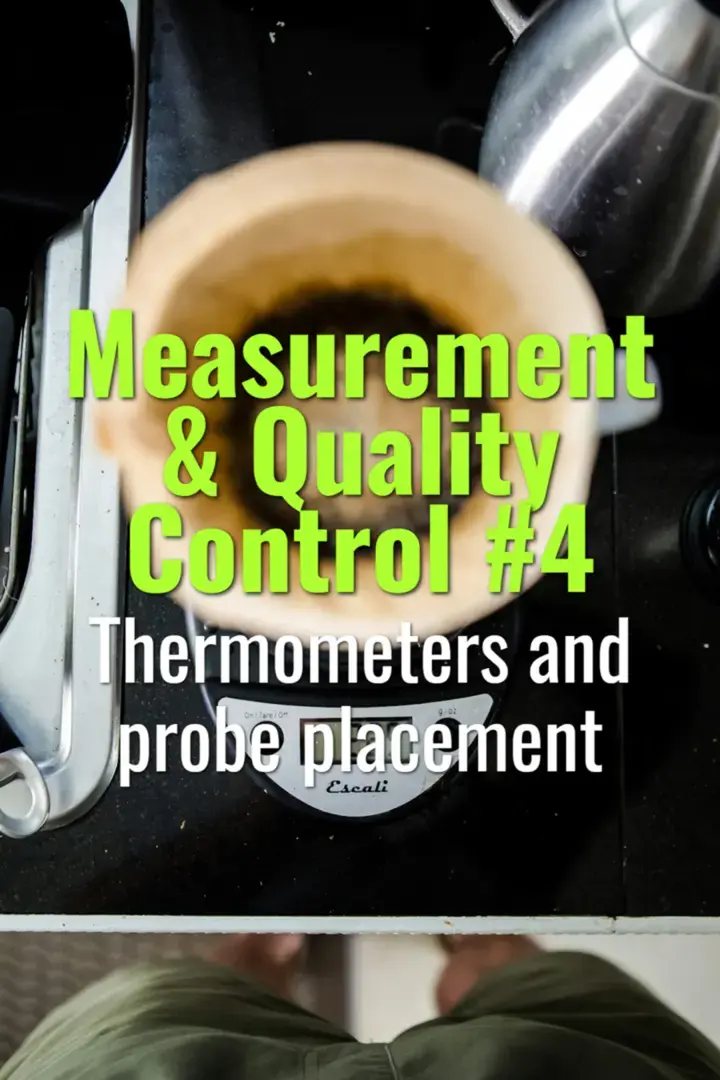Thermometers and probe placement
How to correctly use thermometers and position probes for reliable temperature control in coffee brewing and roasting.
- Coffee Basics Nerds
- 1 min read
Article 4 of 12 in Measurement & Quality Control/

Thermometer Use
- Purpose: Monitor water and environmental temperatures to ensure consistent extraction and roasting.
- Types:
- Digital thermometers: fast response, high accuracy.
- Infrared thermometers: surface readings, useful for roasters but less reliable for liquids.
- Thermocouples and RTDs: common in roasters for bean and environmental temperature tracking.
Probe Placement
- Espresso Machines:
- Grouphead probes measure brewing water temperature.
- Boiler probes track stability and heating efficiency.
- Roasters:
- Bean probe: measures temperature inside the coffee mass.
- Environmental probe: measures hot air circulating in the drum.
- Placement must avoid direct contact with metal surfaces to prevent false readings.
- Brewing Kettles:
- Place probes near the water outlet for accurate pour-over water temperature.
Best Practices
- Calibrate thermometers regularly with boiling and ice water tests.
- Avoid probe placement where stratification or heat lag skews results.
- Use multiple probes when possible to compare readings (bean vs air temp).
Summary
Correct thermometer use and careful probe placement are critical for accurate temperature control, ensuring consistency in both brewing and roasting processes.